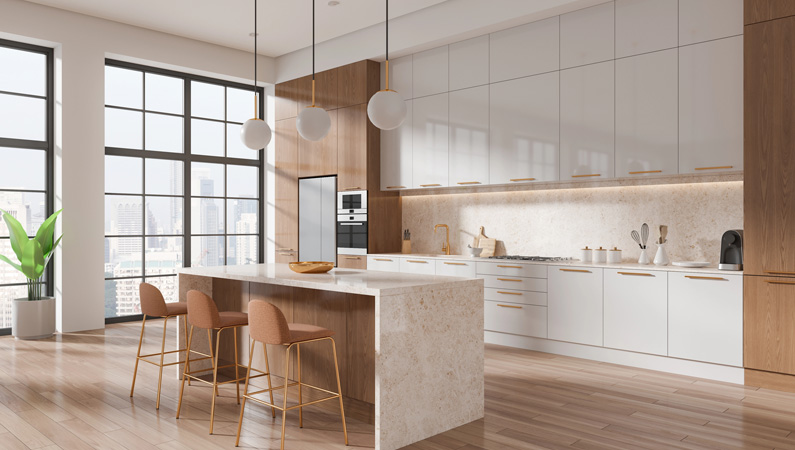Renovating a small kitchen—or one housed in a Toronto condo—can come with tight spaces, unique restrictions, and a variable budget. But with strategic planning and smart design choices, you can transform your kitchen into an efficient, stylish, and cost-effective space. Whether you’re updating your current unit or preparing to sell, here’s how to make every dollar—and inch—count.
How to Get the Most Value Out of Your Unit Update
1. Set a Realistic Budget Range
While DIY efforts may shave off some costs, working with a seasoned Toronto contractor ensures work stays safe, compliant, and smooth—even in buildings with permit rules or construction regulations. Keeping your budget aligned with market expectations ensures you don’t overspend in a competitive condo market.
2. Choose Space-Saving Appliances
In small kitchens, big appliances can overwhelm both the layout and the budget. Opting for compact models—especially for stoves, refrigerators, or dishwashers—saves money and retains vital floor and cabinet space. These smaller models often cost less upfront and open up breathing room for better flow.
3. Upgrade Lighting & Energy Efficiency
Investing in LED lighting or energy-efficient appliances may require an initial cost bump, but pays off with long-term savings. Brighter, eco-friendly fixtures modernize the space, reduce energy consumption, and lower your electricity bills. In Toronto’s urban setting, where rising utility costs are top of mind, this upgrade delivers both value and comfort.
4. Maximize Storage with Smart Solutions
Small kitchens demand clever storage. Bring efficiency and space together using:
- Pull-out shelves
- Roll-out trays
- Tiered organizers
- Lazy Susans
These features make the most of tight spots, improving accessibility and organization without enlarging your kitchen’s footprint.
5. Use Transformative Multi-Functional Elements
When space is tight, versatility is your friend. Pull-out countertops, fold-down tables, or slide-away surfaces offer temporary workspace without permanent bulk. These ingenious elements ensure you gain prep or dining space only when needed, minimizing clutter the rest of the time.
6. Consider Selective Structural Changes
Opening up a wall between the kitchen and living area can dramatically improve light, openness, and social flow. This feels luxurious without expanding square footage. However, in Toronto condos, you’ll need to navigate condo board approvals and building codes—so consult professionals before opening walls or altering layouts.
7. Balance DIY and Professional Expertise
While tackling some tasks yourself can reduce labor costs, there’s value in hiring professionals for critical work—especially where permits, electrical, plumbing, or structural elements are concerned. A knowledgeable contractor not only ensures code compliance, but often helps secure materials at better rates and coordinates subcontractors efficiently.
8. Strategic Style on a Small Budget
Small changes can deliver a big punch:
- Swap outdated light fixtures for sleek, energy-efficient styles.
- Paint cabinetry in light, airy tones to enhance brightness and perceived space.
- Refresh hardware like door handles and pulls for a quick modern upgrade.
- Use a simple, stylish backsplash to inject personality on a budget.
Those touches give the kitchen a polished look—ideal for Toronto’s design-savvy market.
9. Timing Makes a Difference
Plan your renovation timeline carefully—especially in multi-unit buildings where contractors, elevators, and inspections can delay work. Coordinate the renovation close to listing time to ensure assets look fresh. Factor lead times for materials, permits in Toronto, and staging dates into your plan for seamless execution.
10. Showcase the Transformation
Once the renovation is complete, stage the space to highlight its strengths. Thoughtful decor, minimal clutter, and pops of greenery or soft accents help buyers or guests visualize how the layout and finishes come together in daily life.
Why These Strategies Work in Toronto
Toronto’s condo market is competitive and evolving. Buyers seek well-designed, functional spaces that don’t feel outdated or cramped. By focusing on smart storage, energy efficiency, modern finishes, and opening up the space, your renovation both increases appeal and aligns with local expectations—without overshooting your budget.

